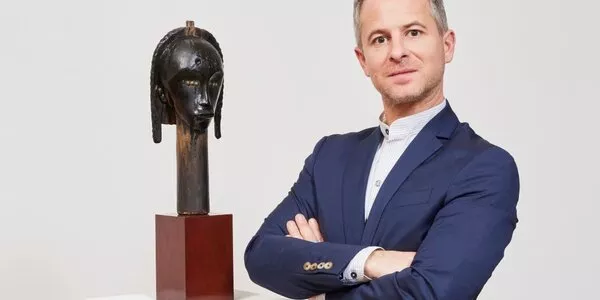
Frankfurt, city of art and finance
Frankfurt inevitably evokes the world of finance. After the establishment of the European Central Bank in 1998, the capital of the state of Hesse attracted many financial institutions. This trend has accelerated recently, with the European headquarters of several international banks such as Goldman Sachs, JP Morgan, Morgan Stanley, Citigroup, Nomura, Sumitomo Mitsui, UBS, Credit Suisse and Standard Chartered moving into Europe in anticipation of Brexit.
What is less well known is that since the early 2000s, the city has radically modernized and developed its museum infrastructure, becoming a fully-fledged cultural destination for the art lover. Frankfurt now has around 50 museums and exhibition centres, most of which are located along the banks of the Main River and a stone's throw from the historic city centre. Some have undergone major renovations or extensions (Schirn Kunsthalle, Museum of Applied Arts and Museum of World Cultures, in particular), while others have come out of the ground ex nihilo. Among the latest additions are the MMK 2 contemporary art centre in the Taunus Turm (Taunus Tower), the Goldkammer (opened in 2019) and the Museum of Electronic Music, which will open in 2020.
This dynamism has of course took advantage from the real estate boom and the development of the city's business district, which have generated significant tax revenues. It has also benefited, in many cases, from the direct support of local businesses, reviving a historical tradition of patronage dating back to the early 19th century. Thus, it was a banker and spice merchant, Johann Friedrich Städl, who in 1815 gave birth -along with his name -to one of the most important German museums, where visitors can discover a unique collection of European art from the 16th to the 20th century, while the "Kunstverein" of Frankfurt, a major centre for contemporary art on the German scene, was created on the initiative of the city's citizens and merchants in 1829.
This tradition of cultural patronage continues resolutely in our time. In this respect, the reading of the "tableaux d'honneur" devoted to the patrons of museums and art centres is edifying, given the large number of institutional donors. The Städl Museum, for example, enjoys the support of some fifty companies, while the MMK Museum of Modern Art is supported by some sixty institutional friends, private foundations -starting with the Jürgen Ponto Foundation, former head of the Dresdner Bank -and financial institutions, led by a dynamic circle of friends, chaired by the industrialist Stefan Quandt. In the panorama of the great patrons of contemporary Frankfurt, it is impossible, finally, not to mention Carlo and Karin Giersch, who have made their fortune in the international distribution of electronic components, and whose philanthropic involvement takes the form of the foundation of several museums, student residences, eponymous research centers, but also of a multifaceted support to the arts, science and medicine.
The result of this remarkable combination of ambition and means is that Frankfurt has created in the space of a few decades a formidable showcase for the arts and sets an example of virtuous development, where economic growth, thanks to the involvement of its major players in local development, is bringing culture in its wake.
Laurent Issaurat & Petra Mennong





